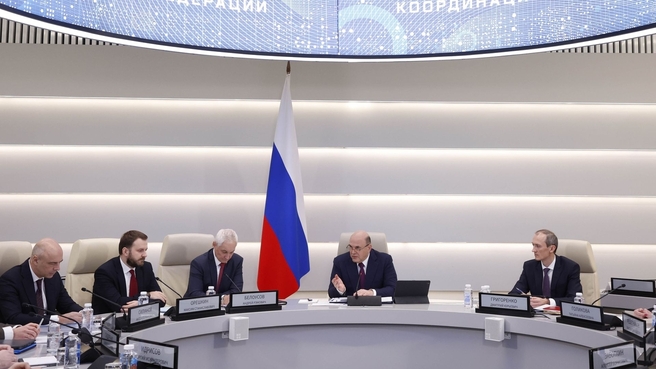Mikhail Mishustin: Our economy continues to adapt to current challenges and has demonstrated resistance to a number of risks. This is largely the result of implementing the President’s instructions and the measures we have coordinated and included in the plan of priority actions to ensure the development of the Russian economy under external sanctions pressure.
Mikhail Mishustin’s opening remarks:
Good afternoon, colleagues.
Our economy continues to adapt to current challenges and has demonstrated resistance to a number of risks. This is largely the result of implementing the President’s instructions and the measures we have coordinated and included in the plan of priority actions to ensure the development of the Russian economy under external sanctions pressure.
A certain slump was inevitable under the current circumstances. The economy needs time to adjust. The current GDP figures are substantially better than the forecast made in the first six months of the year. I would like to remind you that some experts predicted a two-digit decline.
It is evident now that these pessimists were wrong. Many agencies, including international organisations such as the International Monetary Fund, the World Bank and the OECD, have revised upwards their forecasts of our economic growth pace. According to our tentative forecasts, the year-end figure could be less than three percent.
Our industry is working under new conditions as well. Active efforts are being taken to produce component parts we imported in the past. There are new suppliers and buyers. In the third quarter, the biggest growth compared to the second quarter was reported in manufacturing. You may remember the in-depth discussions we held about the challenging data in manufacturing. Well, the current figure is almost seven percent, or more precisely, 6.8 percent.
The production of furniture, clothes, electronics and many other products is growing. Overall, industrial production has increased by 0.4 percent year on year over the first nine months of the year.
We are posting good results in agriculture, and we have reaped a record-breaking harvest this year.
Grain harvests exceed 2021 volumes by 25 percent. The construction sector is also showing positive growth.
Inflation is subsiding due to the consistent actions and decisions of the President, the Bank of Russia and the Government. As of 14 November, it fell to 12.4 percent in annual terms. In some countries, including many European countries, this indicator exceeds Russian levels.
The unemployment rate remains extremely low; it stood at less than 4 percent in September. Among other things, this was made possible by preventive measures to support employment, adopted in line with the President’s instructions. This includes a decision to extend support for jobseekers until late 2023.
Colleagues,
Although the economic situation has stabilised, there are different forecasts and scenarios regarding subsequent developments. We must closely follow ongoing processes because the global crisis might get worse, and we need to assess other factors, including the sanctions pressure, and respond appropriately to this. We must evaluate solutions and prepare responses, while analysing all possible scenarios, primarily the subsequent restructuring of the balance of payments, the reduction of foreign currency payments and expanded international payments in roubles. While coordinating our budgetary and monetary policy, we will jointly rely on a new budget rule, approved by the President. Under this rule, we will be able to spend about 8 trillion roubles’ worth of oil and gas revenues on financing our expenditures. This will make it possible to provide greater support for the economy and Russian citizens.
It is also necessary to stipulate investment incentives, including the development of the state guarantees mechanism. We discussed them in great detail at a meeting with the President.
And, of course, we must be prepared for possible changes on the labour market that are linked with economic restructuring. Many sectors are now hard pressed for human resources. We have to adopt specific decisions for overcoming these worker shortages and ensuring the market’s flexibility.








